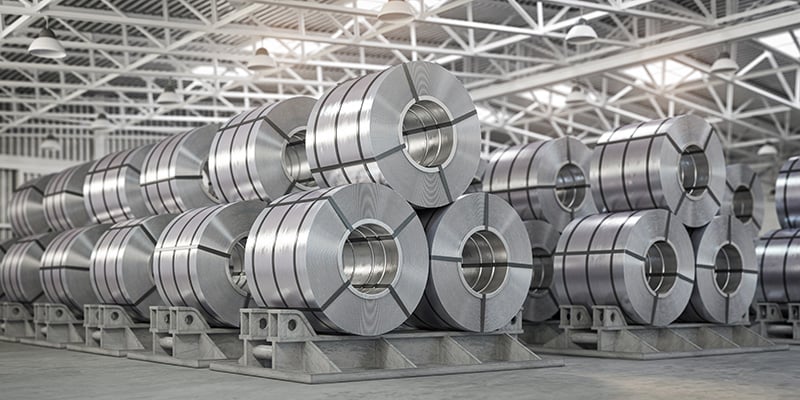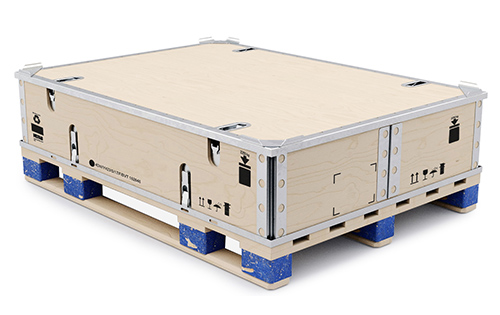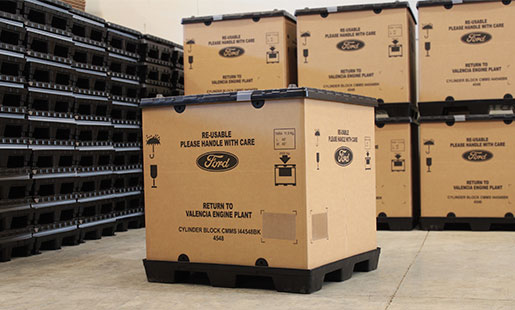Top quality in Every Mold: Plastic Container Manufacturer Expertise
Wiki Article
Efficient Industrial Recycling Solutions for Lasting Product Packaging: A Comprehensive Overview
In today's significantly environmentally-conscious world, the demand for lasting packaging services has never been greater. To fulfill this need, services throughout markets are actively looking for efficient industrial recycling remedies. Browsing the complex landscape of lasting packaging can be testing without an extensive overview. That's where this comprehensive guide on effective industrial recycling options for lasting packaging can be found in. By discovering essential areas such as packaging material selection, making for recyclability, carrying out reusing facilities, collaborating with recycling companions, and monitoring and gauging recycling success, this overview will outfit you with the understanding and devices necessary to make educated decisions and drive positive change within your company. Whether you're a packaging expert, sustainability manager, or simply curious about the subject, this overview will supply valuable insights and strategies to aid you navigate the world of lasting packaging.Packaging Product Choice
The selection of packaging materials plays a vital role in guaranteeing the sustainability of industrial reusing options. When it concerns lasting product packaging, the option of materials is crucial in lessening environmental effect and making the most of recycling efficiency. Selecting the best products can help in reducing waste generation, save resources, and promote a circular economy.One crucial variable to consider in packaging product selection is recyclability - industrial packaging solutions. Products that can be quickly recycled and included back right into the production cycle are favored. Materials like cardboard, paper, glass, and certain kinds of plastics can be reused multiple times without losing their quality. On the other hand, products that are hard to reuse, such as combined plastics or non-recyclable compounds, can create obstacles for the recycling procedure and may end up in landfills or burners.
An additional consideration is the use of biodegradable and renewable products. Product packaging made from renewable energies, such as plant-based plastics or biopolymers, can help in reducing dependence on nonrenewable fuel sources and alleviate environment modification. In addition, biodegradable materials break down normally in time, minimizing the accumulation of waste in landfills.
In addition, the weight and volume of packaging materials ought to be lessened to minimize transportation costs and power usage. Light-weight products not only need fewer resources during production yet also add to reduce carbon discharges throughout transportation.
Designing for Recyclability
Packaging designers need to prioritize the usage of materials that are commonly approved for recycling and have actually developed recycling facilities. Materials such as glass, aluminum, and certain types of plastic, like Animal and HDPE, are frequently recycled and ought to be preferred over products that are challenging or expensive to recycle.Another critical consideration in creating for recyclability is the removal of unnecessary components or materials. By decreasing the variety of layers, finishes, and additional components, packaging can be made easier and less complicated to recycle. In addition, designers must aim to minimize using mixed products, as they can complicate the recycling process.

Implementing Recycling Framework
Efficient execution of recycling framework is crucial for the success of commercial reusing options. Without appropriate framework in location, the recycling process becomes inefficient and inefficient, hindering the general objective of sustainable product packaging.To implement recycling framework efficiently, a number of crucial elements need to be thought about. First of all, there ought to be an efficient collection system that helps with the splitting up and collection of recyclable materials. This can include marked reusing containers in public rooms, as well as collaborations with waste monitoring firms for curbside pickup and sorting.
When accumulated, the recyclable products require to be transported to reusing facilities in a prompt fashion. This calls for effective logistics and transportation networks, guaranteeing that the materials reach the proper centers without delay.
At the reusing facilities, progressed sorting and processing technologies need to be in area to separate various sorts of materials successfully. This includes using automated arranging makers, optical scanners, and hands-on sorting techniques.
In addition, there need to be a robust market demand for recycled products. This can be attained through cooperations with producers and sectors that utilize recycled materials in their production processes. Producing a secure market for recycled products incentivizes the reusing market and promotes the round economic situation.
Working Together With Recycling Partners

One trick aspect of teaming up with reusing companions is the facility of clear interaction networks. It is necessary to develop open lines of communication to facilitate the exchange of information, updates, and responses. This allows both events to remain informed about the progression of recycling campaigns and deal with any type of difficulties or problems that might emerge.
Additionally, collaboration can entail joint efforts in developing and carrying out recycling programs. Reusing companions can give beneficial insights and support in establishing reliable collection systems and figuring out the most appropriate recycling innovations. By collaborating, businesses and recycling companions can maximize the reusing procedure and lessen waste.
In addition, collaboration can expand beyond the functional facets of recycling. It can also encompass advocacy and education and learning campaigns. By signing up with forces, services and recycling partners can raise awareness about the value of reusing and advertise the adoption of sustainable product packaging practices among customers and other stakeholders.
Tracking and Measuring Recycling Success
To make sure the performance of commercial recycling options and the achievement of sustainable product packaging goals, it is important for companies and their reusing partners to establish an extensive system for monitoring and determining reusing success (industrial packaging solutions). Determining and tracking reusing success permits businesses to evaluate the impact of their recycling efforts, determine areas for renovation, and established purposeful targets for future progressOne method to track recycling success is via making use of data collection and analysis tools. By collecting information on the amount of product packaging waste generated, the percent of waste that is recycled, and the sorts of materials being recycled, organizations can obtain useful insights into their recycling performance. This information can after that be analyzed to determine fads, patterns, and locations of inadequacy.
Another crucial element of tracking and gauging reusing success is establishing standardized and clear metrics. This enables businesses to contrast their efficiency against sector criteria and track their development with time. Metrics such as reusing prices, waste diversion prices, and greenhouse gas discharges can offer a measurable procedure of a business's reusing success.

Conclusion
In verdict, executing effective industrial recycling services for lasting product packaging requires careful consideration of packaging product choice, developing for recyclability, applying recycling framework, collaborating with reusing partners, and tracking and measuring recycling success. By including these methods, organizations can add to a more lasting and environmentally-friendly method to product packaging, lowering waste and promoting the round economic situation.By discovering key areas such as product packaging material choice, developing for recyclability, implementing recycling framework, working together with recycling partners, and monitoring and determining recycling success, this guide will outfit you with the understanding and tools needed to make informed choices and drive positive modification within your company. Product packaging designers must focus on the use of materials that are commonly accepted for recycling and have developed recycling frameworks.Partnership with recycling partners is crucial for the successful execution of commercial recycling solutions and the achievement of sustainable product packaging goals. By signing up with forces, companies and recycling partners can raise recognition regarding the relevance of reusing and promote the adoption of lasting packaging practices among consumers and various other stakeholders.
By collecting data on the amount of product packaging waste generated, the percentage of waste processing company that is recycled, and the types of products being recycled, services can gain important understandings into their recycling efficiency.
Report this wiki page